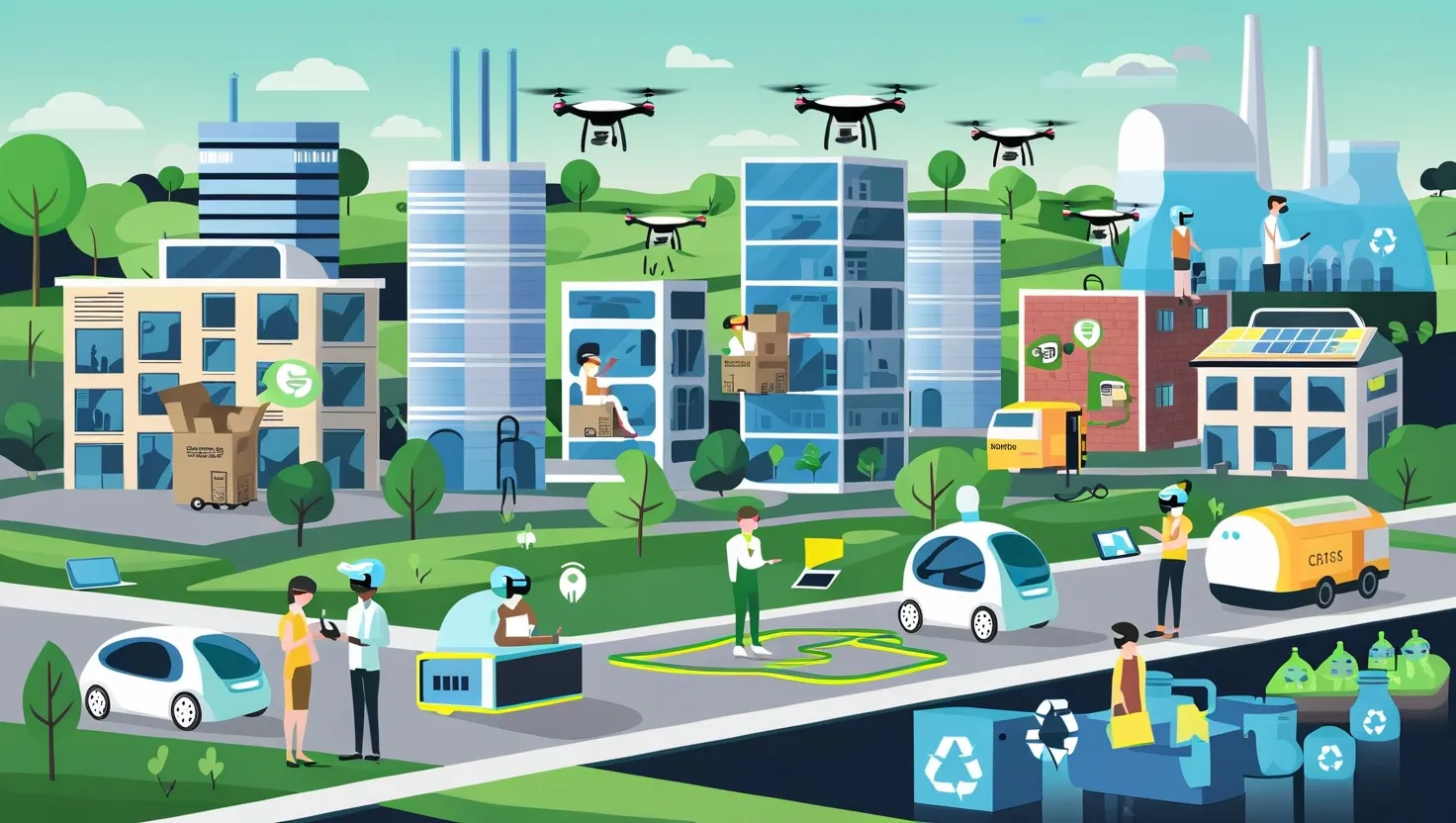As we step into 2024, the landscape of consumer behavior is undergoing a significant transformation, driven by a multitude of microeconomic trends. These shifts are not just superficial; they are fundamentally altering how businesses operate, market their products, and develop new offerings. Let’s delve into five key trends that are reshaping the consumer landscape and explore their implications.
The Green Wave: Sustainable and Ethical Consumption
Consumers are increasingly making choices that reflect their values, particularly when it comes to sustainability and ethics. This trend is no longer a niche movement but a mainstream phenomenon. People are opting for climate-conscious choices, circular economy initiatives, and products with transparent and responsible supply chains. This shift is driven by a growing awareness of the environmental and social impacts of consumerism.
Companies are responding by integrating sustainability into their core business models. For instance, brands are adopting closed-loop product designs where materials are reused, recycled, and repurposed. Innovative recycling technologies are also on the rise, aiming to minimize waste and maximize resource efficiency. The demand for sustainable supply chains is another area where businesses are focusing, ensuring traceability, fair labor conditions, and responsible sourcing.
This trend is not just about compliance; it’s about creating a competitive advantage. Consumers are willing to pay a premium for products that align with their values, making sustainability a key differentiator in the market. As technology advances, tools like blockchain and artificial intelligence are being leveraged to ensure supply chain transparency and optimize resource management, further empowering sustainable practices.
The Subscription Revolution
Subscription-based services have become ubiquitous across various industries, from streaming and software to groceries and clothing. This model offers consumers convenience, flexibility, and often a sense of belonging to a community. The rise of subscriptions is changing how businesses think about customer relationships and revenue streams.
Companies are moving away from one-time sales towards ongoing engagements. This shift requires a focus on continuous value delivery, ensuring that customers remain satisfied and engaged over time. Personalization plays a crucial role here, as subscriptions allow businesses to gather detailed data on consumer preferences and tailor their offerings accordingly.
For example, streaming services use algorithms to recommend content based on viewing history, enhancing the user experience and increasing retention rates. Similarly, subscription boxes for groceries or clothing curate products based on individual tastes, making the shopping experience more enjoyable and personalized.
Remote Work: A New Economic Landscape
The pandemic accelerated the shift towards remote work, and this trend is here to stay. Remote work has significant implications for local economies and spending patterns. As the workforce disperses from concentrated business districts, local retail businesses are experiencing a decline in foot traffic and employment.
However, this redistribution of the workforce also presents opportunities. Remote workers, who tend to be more educated and skilled, are driving economic growth in suburban and rural areas. Companies are adapting by offering flexible work arrangements and investing in digital infrastructure to support remote teams.
The impact on spending patterns is also noteworthy. With more people working from home, there is a greater demand for home office equipment, online services, and delivery-based convenience products. Businesses are responding by expanding their online offerings and enhancing delivery services to cater to this new demographic.
The Quest for Personalization and Experience
Consumers are no longer satisfied with generic products; they crave personalized and experiential offerings. This demand is driving innovation in product development and marketing strategies. Companies are using advanced data analytics to understand consumer preferences and create tailored products and experiences.
For instance, in the fashion industry, brands are offering bespoke clothing options where customers can design their own garments based on their preferences. In the travel sector, personalized itineraries and experiential packages are becoming increasingly popular.
Technology is a key facilitator of this trend. AI and machine learning algorithms help businesses analyze consumer data and predict preferences, enabling them to offer highly personalized products and services. Virtual and augmented reality are also being used to create immersive experiences that enhance customer engagement.
The Social Media Influence
Social media has become an indispensable part of consumer decision-making. Platforms like Instagram, TikTok, and YouTube are not just for socializing; they are powerful marketing channels. Influencers and user-generated content play a significant role in shaping consumer preferences and driving purchasing decisions.
Companies are leveraging social media to build brand awareness and engage with customers directly. Social media campaigns are designed to be interactive, encouraging user participation and feedback. This approach helps businesses understand consumer sentiments in real-time and adjust their strategies accordingly.
The impact of social media on traditional marketing models is profound. It has democratized marketing, allowing smaller brands to compete with larger ones by leveraging viral content and influencer partnerships. However, it also requires a high level of agility and responsiveness, as social media trends can change rapidly.
Adapting to Change
As these trends continue to evolve, businesses must be agile and adaptable to remain relevant. This involves a cultural shift within organizations, prioritizing innovation, sustainability, and customer-centricity.
Technology is a critical enabler of these trends, but it is not a panacea. Companies need to invest in digital infrastructure, data analytics, and AI to leverage these technologies effectively. Moreover, they must foster a culture of continuous learning and innovation to stay ahead of the curve.
Successful implementations can be seen across various industries. For example, companies like Patagonia and REI have successfully integrated sustainability into their business models, appealing to consumers who value ethical and environmentally responsible practices. Subscription services like Netflix and Spotify have revolutionized the entertainment industry by offering personalized content recommendations.
In conclusion, the microeconomic trends shaping consumer behavior in 2024 are multifaceted and interconnected. As consumers become more discerning and value-driven, businesses must evolve to meet these new demands. By embracing sustainability, personalization, and technological innovation, companies can not only survive but thrive in this dynamic landscape. The future of consumerism is not just about selling products; it’s about creating meaningful experiences and values that resonate with consumers on a deeper level.






